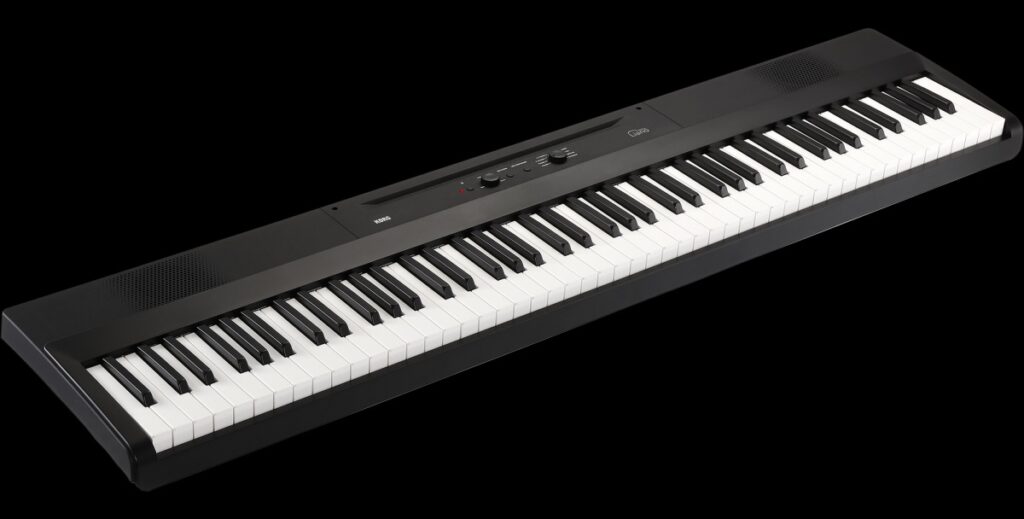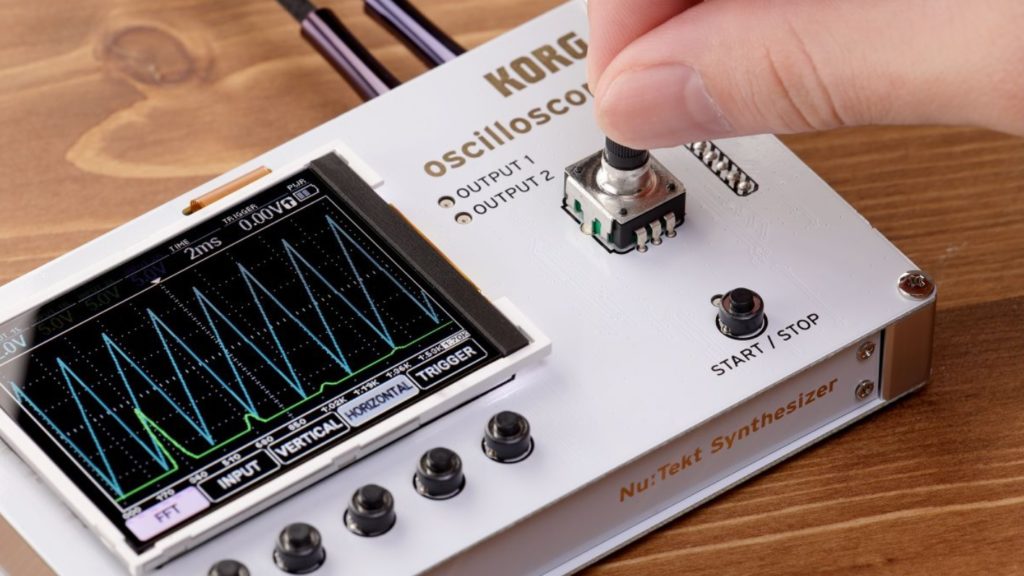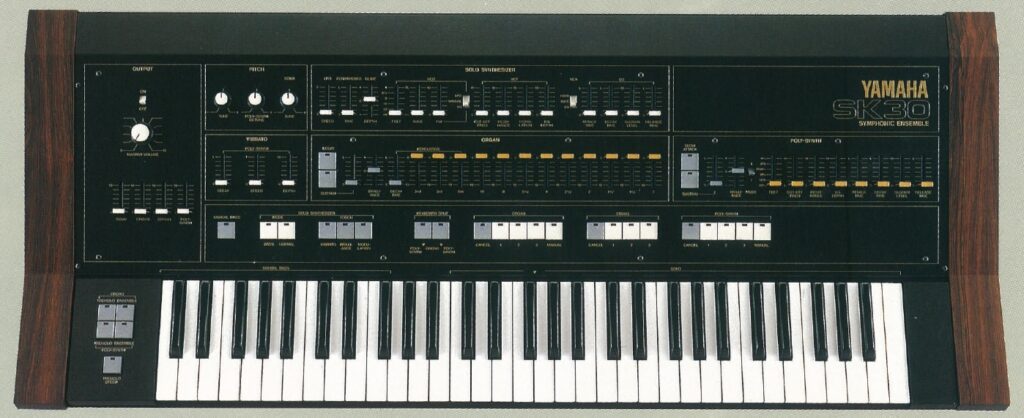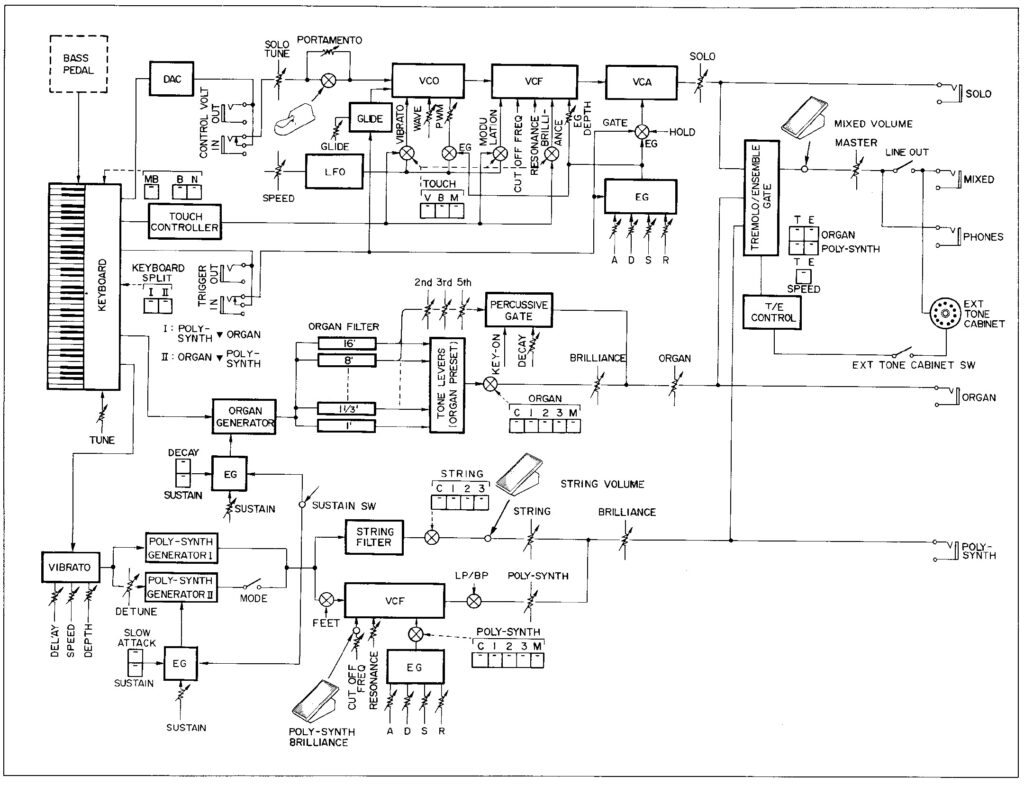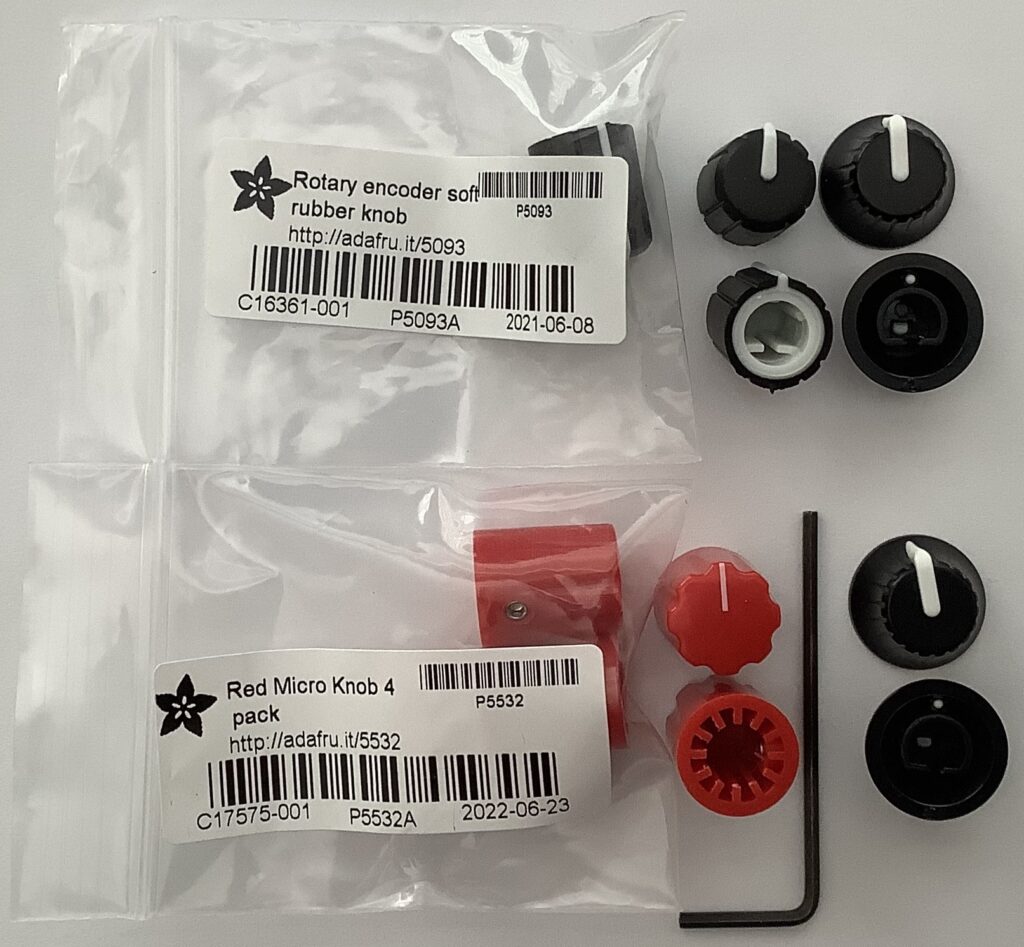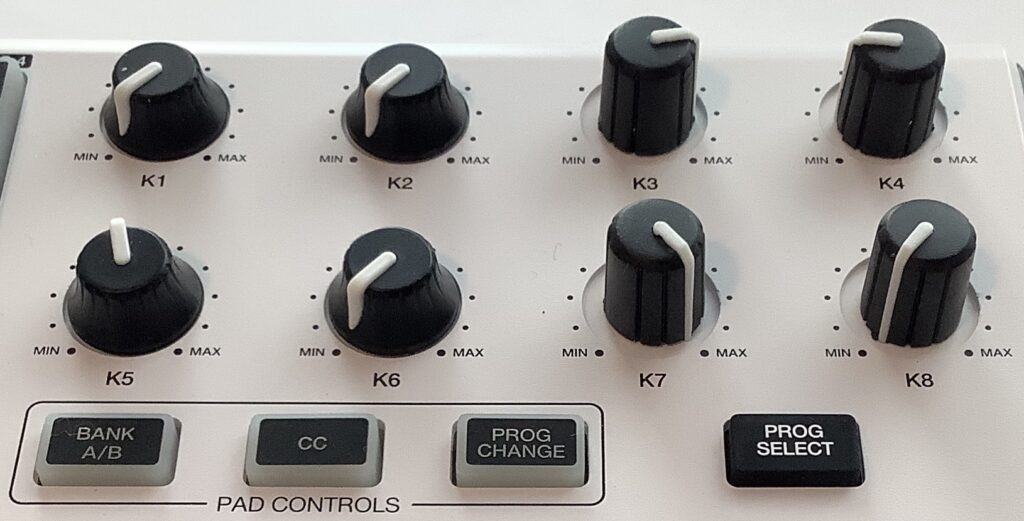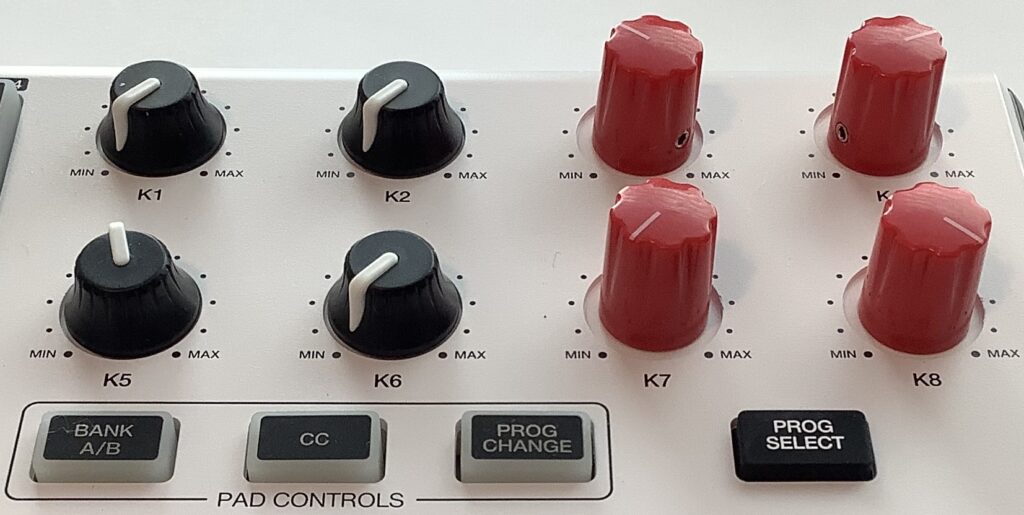Korg dropped two new products for Fall 2022: The Liano digital piano and drumlogue hybrid drum machine
The Liano is about as minimalist as it comes. The Liano is a sleek monolith with just a few simple controls. This keyboard absolutely does not require a user manual! You get the standard eight preset voices (two grands, a Rhodes, an FM EP, harpsichord, pipe organ, electric organ, strings), two effects (reverb and chorus), metronome, two built-in 8cm bass reflex speakers (8 Watts a side), USB-B, and sustain. That’s it.
This board is such a slab, Kubrick could have used it as the monolith in 2001: A Space Odyssey. 🙂 Imagine monkeys dancing around a Liano tipped on its side. You know, Korg, every search engine in the world will auto-correct “liano” to “piano”?
The Liano is super-light 6.0kg (13.2 pounds). The demos sound pretty decent. Aside from being a student piano, I could see using a Liano at choir rehearsals or any occasion requiring portability (six AA batteries). The down-side of the small sound set is that a given preset either fits the musical situation or it doesn’t. This is especially true of the pipe organ (uni-dimensional full pipes) or the electric organ. I hate to slag the Liano’s electric organ as it would be fine in a jazz setting, but forget rock or gospel.
Korg clearly are going head-to-head with Yamaha and Casio in the entry-level piano market. Liano’s minimum advertised price (MAP) is $399 USD.
I’m sure the Interwebs will be filled with drumlogue news. It’s analog! The Korg demos have punch! It accepts ‘logue synth plug-ins! It’s $599 USD MAP.
Both the Liano and drumlogue are pre-order. I hope Korg gets a move on because I an still waiting for the Korg Nu:tekt NTS-2 oscilloscope ($230 USD MAP). Come on, man!
Not from Korg, the Intech Studio Knot is another USB host to MIDI bridge box (AKA stand-alone USB MIDI host). It is tiny and has an $89 pre-order price. (That’s 25% off.) Knot takes power from either USB-C or a DC adapter. External power is critical because some controllers draw enough current to power a small town. (Well, that’s exaggerating.)
The down-side of its tiny size is 3.5mm MIDI IN and OUT ports instead of 5-pin DIN. Yes, you will need 3.5mm to DIN adapters.
Knot is an open source project and supports firmware updates.
If you need a MIDI bridge and have a Raspberry Pi, check out these articles:
All it takes are a few simple Linux commands. Admittedly, a dedicated bridge like the Knot is the better option for gigging.
Copyright © 2022 Paul J. Drongowski

